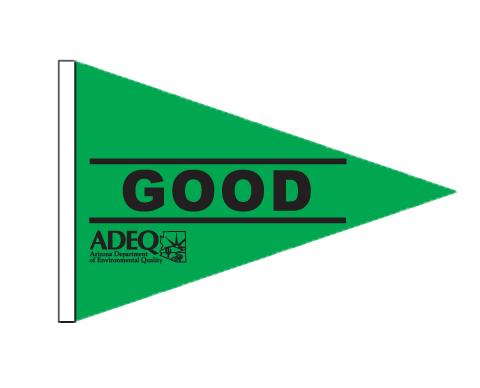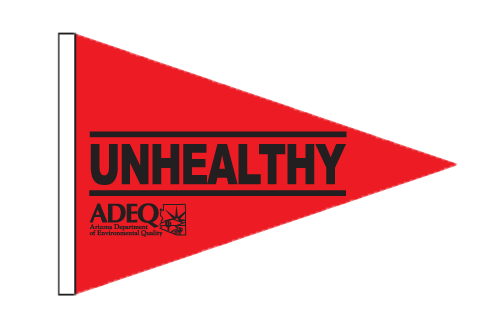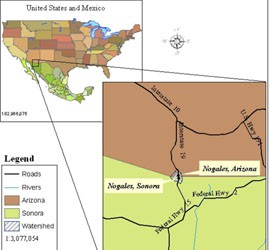Cronkite News has moved to a new home at cronkitenews.azpbs.org. Use this site to search archives from 2011 to May 2015. You can search the new site for current stories.
EPA cuts Nogales some slack on air quality because of cross-border pollution
WASHINGTON – The U.S. Environmental Protection Agency this week agreed with Arizona that the city of Nogales would be in compliance with clean-air standards – if it wasn’t for pollution drifting over from Mexico.
The statement came as part of EPA’s approval of an Arizona Department of Environmental Quality plan to help Nogales meet U.S. air-quality standards. That notice was published Tuesday in the Federal Register.
The notice says, among other things, that EPA reviewed three years of air-quality data from the state and determined that the majority of emissions recorded in Nogales, Ariz., were coming from Nogales, Sonora, Mexico.
“On the Arizona side, they’re below the standard” for pollutants, said Colleen McKaughan, an associate director in the air division at EPA Region 9 in San Francisco. But pollution, dust and smoke from Mexico pushes the U.S. city back over the standard, she said.
Over 90 percent of the pollution in Nogales, Ariz. comes from Mexico, said ADEQ spokesman Mark Shaffer. He said that’s because there is a “downhill slope from Mexico into Arizona.”
Because Nogales, Ariz., exceeds U.S. pollution standards, the state has to submit a proposal to the EPA outlining what it has done and what it plans to do to meet the standard, McKaughan said.
The plan approved by the EPA recognizes that Nogales will not always be in compliance because of its sister city to the south. McKaughan said that under the State Implementation Plan published this week, Arizona also outlined proposals to help reduce the flow of dust by paving dirt roads and to cut vehicle emissions by speeding border crossings, so cars are not sitting and idling for too long.
ADEQ works with binational institutions like the Border Environment Cooperation Commission and the North American Development Bank to improve conditions on both sides of the border, Shaffer said. But he said “there needs to be a lot more done in Nogales, Mexico.”
The cooperation commission and the development bank work together to pave dirt roads in cities on both sides of the border, said Irma Flores, a spokeswoman for the commission.
The two organizations strive “to enhance the environmental conditions along the U.S. and Mexican border to benefit residents in both nations,” she said.
In addition to the plan submitted to the EPA, the state has also installed a monitor on top of the Nogales, Ariz., post office that will help forecast the region’s air quality every day. The air quality will be passed on to the public through color-coded alerts, Shaffer said.
The new system will help residents, city and school officials avoid scheduling outdoor activities during times when high dust pollution is predicted.
Shaffer said he hopes the new system will help the area come back into compliance with EPA standards.
McKaughan said it “might definitely help” the city meet EPA standards because people would be more aware of when pollution is high and might be spurred to take actions that would ease the situation.












